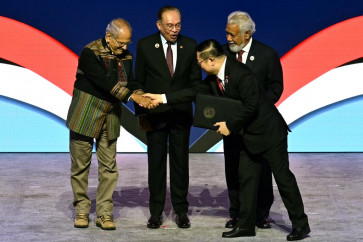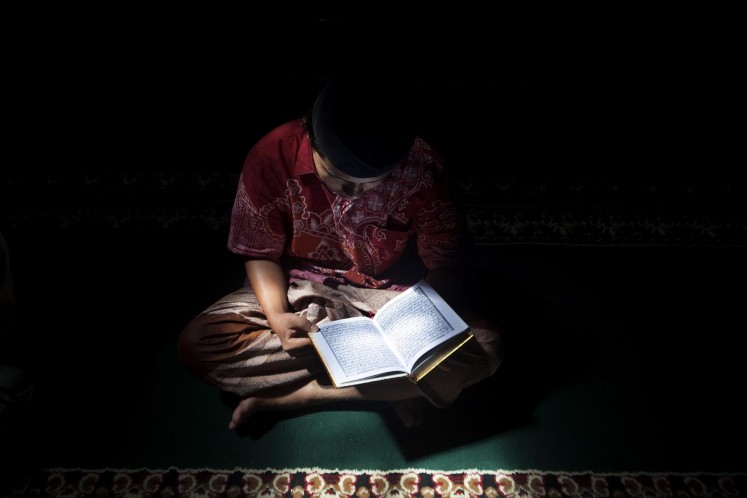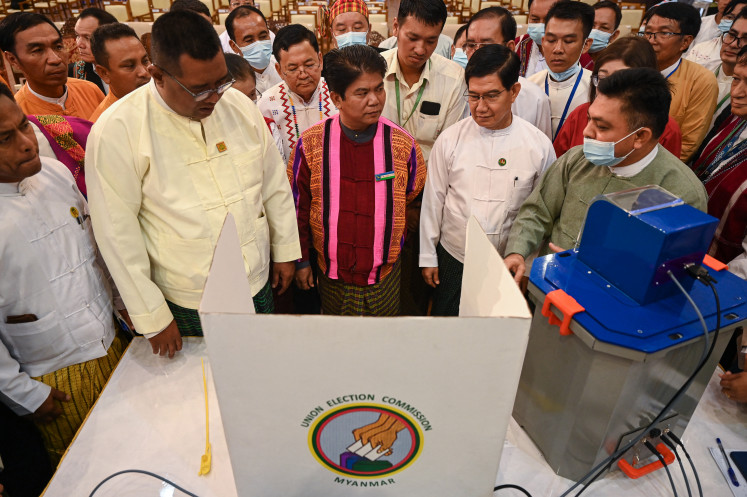Popular Reads
Top Results
Can't find what you're looking for?
View all search resultsPopular Reads
Top Results
Can't find what you're looking for?
View all search resultsFuel mix policy and energy security
During a previous working visit I went to Central Java to observe a state-owned enterprise engaged in the development of geothermal energy for electricity
Change text size
Gift Premium Articles
to Anyone
D
uring a previous working visit I went to Central Java to observe a state-owned enterprise engaged in the development of geothermal energy for electricity.
Though Indonesia has the largest geothermal potential in the world, covering nearly 40 percent of total world geothermal potential with unconfirmed potential of 40,000 MW and immediate utilization potential of 29,000 megawatts, it is only able to explore geothermal energy of around 1,189 megawatts a year.
The question that arises is why has Indonesia been unable to explore its geothermal potential for the benefit of its people? I argue that Indonesia could hardly develop its own capacity to explore geothermal energy due to certain structural constraints caused by government energy strategy, which is known as the fuel mix policy.
According to President Regulation No. 5/2006 which has become the basis of the fuel mix policy, in 2025 the main source of our energy will still heavily rely on non-renewable energy sources such as coal (33 percent) and petroleum (20 percent) while the utilization of renewable energy sources such as geothermal energy will only be around 5 percent of our total energy needs.
This fuel mix policy is simply trying to divert our dependence on oil to coal later in 2025, but will not solve our energy security issues in the future because our coal will only last for another approximate 40 years.
The implementation of a fuel mix policy has resulted in disincentives for the development of geothermal energy. According to data from the Ministry of Energy and Mineral Resources in 2010, sources of Indonesia’s electricity currently come from power plants fuelled by coal (±40 percent), oil (±30 percent), gas (±15 percent), geothermal (±3 percent), and hydro (±8 percent).
Although the use of petroleum is only 30 percent of the total national electrical energy demand, the cost of electricity generated from oil has claimed more than 78 percent of the total cost of electricity.
This means that more than 60 percent of the government subsidy for electricity has been used for the purchase of oil energy.
Furthermore, this policy has also caused the disincentive for the private sector to invest in geothermal energy. Undoubtedly, the initial investment in the geothermal sector is greater than other energy sectors, such as petroleum and coal. It takes capital expenditure of around $6-7 million in order to build a single well to capture geothermal energy.
However, this is not the case. Although initial investments needed to look huge, in the long run it’s not that big considering operational costs for geothermal power plants are not as expensive as other energies.
The lack of private investment in the geothermal sector is due to the low selling prices of electricity from geothermal energy set by the government. This has resulted in a lower internal rate of return (IRR) for investment and the longer payback period in the geothermal field.
Currently, PLN as a single buyer purchases electricity from geothermal energy at around 5 to 9.7 cents per kWh while at the same time PLN continues to buy electricity from petroleum at around 25-30 cents per kWh. With this policy, it is clear that the government continues to provide incentives for the use of oil for electricity rather than geothermal energy.
As long as our fuel mix policy still relies on non-renewable energy and there are disincentives for the private sector to invest in renewable energies, we will not be able to ensure our energy security based on renewable energy sources.
To anticipate this problem, there are several steps that should be taken by the government. First, the government should revise its energy roadmap by prioritizing Indonesia’s geothermal energy as the primary source of electricity in Indonesia.
In this roadmap, the government should encourage the private sector’s role in the electricity sector in Indonesia, especially in investing in the geothermal energy sector.
Second, there is a need for restructuring the electricity industry through a pricing mechanism which gives a more promising business climate for investors to invest their capital in geothermal energy.
The government, through PLN, should be able to change its pricing policy, which provides incentives for the development of geothermal energy and reduces dependence on petroleum.
In addition to pricing mechanisms, the government can encourage private involvement through the tax deduction policy for any private business to invest in geothermal energy. By so doing, thus, we can expect that geothermal energy will be the main source of our energy in the future.
The writer is a lawmaker from the Prosperous Justice Party and chairman of WWF Indonesia.










